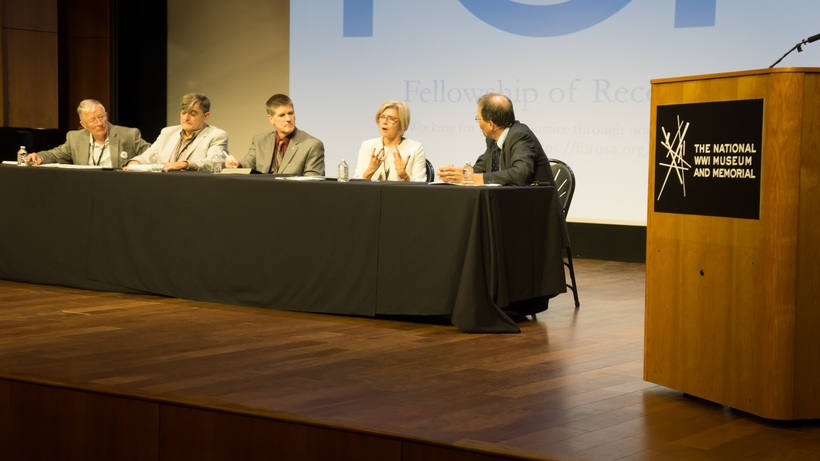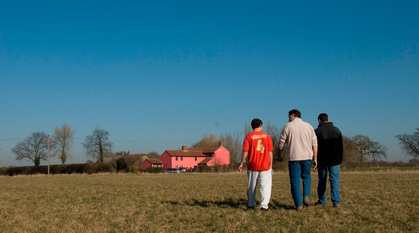Remembering the conscientious objectors of World War I in Kansas City
On the centenary of the USA's involvement in World War I, Jane Dawson reflects on how conscientious objection was one of the sparks that ignited a century of change.

Kansas City is the largest city in Missouri and once the western frontier of the United States. The sprawling Mississippi flanks its border with the state of Kansas. It marks a boundary, the former division between the Union and the slave-owning states of the South.
As the gathering point for pioneer trails out west, Kansas City was always a melting pot of hope, religious zeal and military might. It also, despite the name, has nothing to do with the Wizard of Oz. Which didn't stop friends and colleagues alike from quizzing me about whether I was taking my ruby slippers with me as I prepared to travel there for the Remembering Muted Voices symposium in October.
The event was a place for American peace groups and churches to remember conscientious objectors, sometimes known as COs, in World War I, and I was due to join them to talk about how Quakers are compelled by their faith to refuse military service.
Of course no ruby slippers were required, but I did pack a bulk consignment of white poppies: thanks to the Peace Pledge Union, every delegate at the symposium I was attending would receive one. I held my breath as US Customs opened my luggage. As Quakers know, symbols of peace are not universally appreciated.
A legacy of war
Today Kansas City is the home of Hallmark cards and the Kansas City Chiefs American football team. Less benign is the wealth created by the production of small arms bullets for the US military or the plant that produces 85 per cent of the non-nuclear material used in the United States nuclear weapon arsenal.
Across the state border is Fort Leavenworth, a US military prison. During WWI soldiers held religious conscientious objectors and suspended them in chains from the bars of their cells to punish them for refusing the draft. I have visited sites in England that once bore witness to equally shocking events; Richmond Castle in Yorkshire is just one example of a place
Kansas City is also home to the nation's largest memorial to Americans who fell in WWI. It's easy to imagine the impression it made on the rail travellers of the roaring twenties as it stands high above Union Station. Egyptian sphinxes with wings covering their eyes flank a torch-lit tower. Housed beneath this impressive monument is the National WWI Museum where the symposium – one in a series of WWI centenary events hosted by the museum – was held.
Seeds of resistance
World War I defined Quakers in Britain as a peace church. We were the only British church to oppose the war. At the symposium we learned how a number of American churches – whose faith prevented them taking human life – also resisted. These included the Hutterites, Mennonites, and Community of Christ.
Britain recorded around 20,000 conscientious objectors during the war, while in the States 64,700 registered. Three million men didn't register at all. In both countries, resistance to the war was 'fake news', written out of history books. I commend the WWI Museum for showing the rounded picture.
The stories of British conscientious objectors in our White Feather Diaries (website no longer available) online resource mirror the story of four American Hutterite brothers who rejected the draft. Tortured in Alcatraz, two of the brothers eventually died in Fort Leavenworth. This lack of respect for deeply held views and basic human dignity is a source of horror for all who hear their stories.
As the symposium unfolded, it became clear WWI resistance groups were seedbeds of the later civil rights movement. Quaker influence and involvement was evident throughout.
In the face of great adversity, peace work can feel futile. But with the long view of history, I could see the genesis of a century of change.


